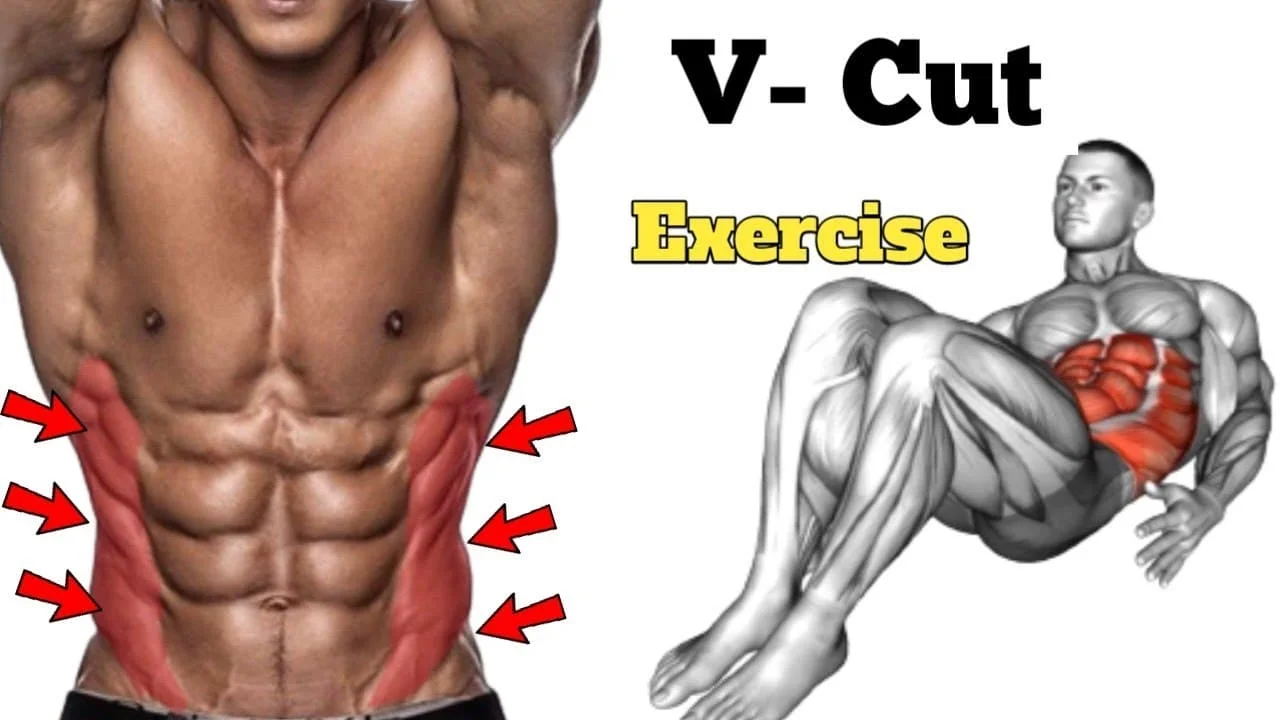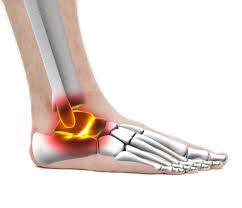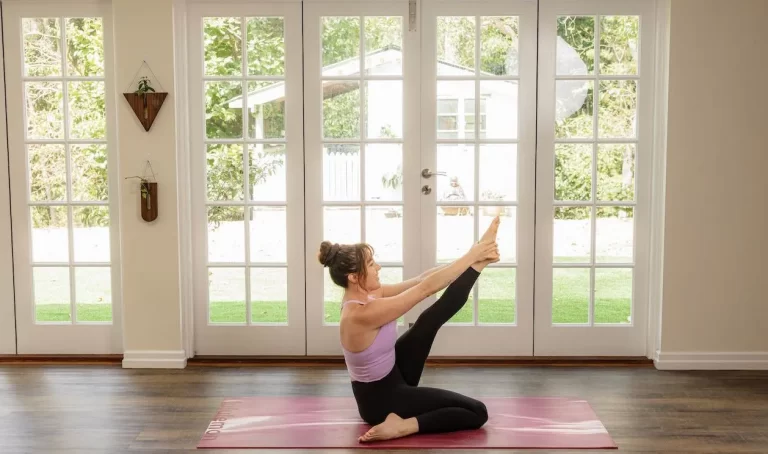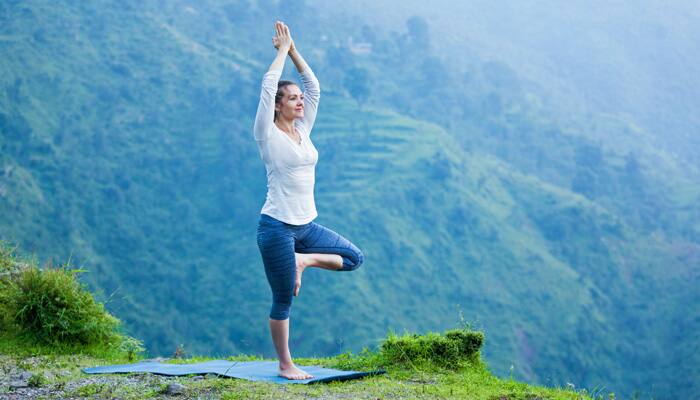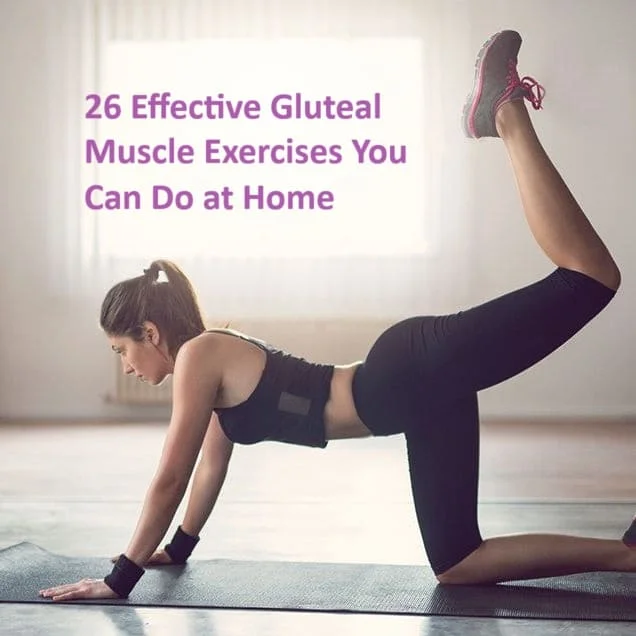29 Best Exercises for a V-Cut, According to Personal Trainers
Introduction
V-cut abs are a creative choice for many people, but they require hard work and dedication to achieve. To get a V-cut, you need to build strong obliques, which are the muscles on the sides of your abdomen. You also need a low body fat percentage so that your obliques are visible.
Every time you take the shirt off, people will notice the physical feature of the V-definition on your lower abdominals. It would help if you now worked out your abdominal muscles separately to get the V-definition; simply performing crunches is no longer sufficient.
You must include workouts to train your external and internal obliques, transverse and rectus abdominis, erectors, glutes, and all other core muscular groups if you want to develop the V-cut abs.
Even if you do the workouts, you still need to commit to a nutrition plan, cut back on calories, and significantly decrease your body fat levels to develop those oblique muscles.
The ab workouts shown below will help you develop the torn, V-cut abs by working the oblique muscles and the entire core.
After every set, take 30 seconds to relax while performing each exercise for 15 counts.
Exercises for the V cuts
Hanging leg raise
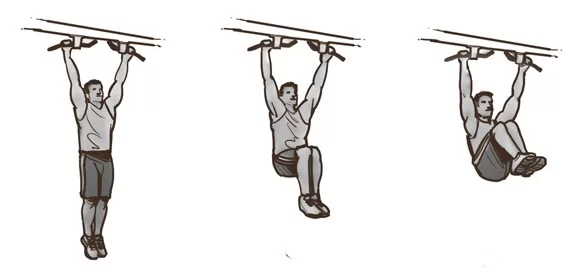
Your forearms, lattisimus dorsi, and lower abs, quadriceps are worked during this workout. To alter the hanging leg raise position, lift your bent knees and maintain them there for 5 to 10 seconds for each repeat. In this bent-knee position, you can turn right or left.
How to execute: Hang from a pull-up bar with your hands slightly broader than your shoulders using an overhand grip.
To straighten your lower back, grip the bar tightly while bending your elbows just a little and using the core to stabilize yourself.
As you elevate your legs just above 90 degrees, contract your quadriceps.
Holding this posture for a few seconds, lower your legs gradually.
Perform three sets of 10–15 repetitions.
2 or 3 times a day
leg raises
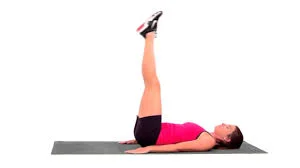
By making the muscles in your abdomen lift your hips and legs off the ground in an upright column, this workout strengthens your lower abs. To complete this activity:
Lean flat on the back to start. A mat can be used for comfort. Place your hands at your sides, palms downwards.
Straightening your legs off the ground so they are pointing up at the ceiling. Make an “L” using your body.
Raise your hips gently off the floor while maintaining your legs straight by focusing on engaging your lower abs. After a little pause, bring your hips back to the ground. Don’t jump or jerk, rather, move with constant controlled motion.
Repeat. Perform this exercise for 4 sets of 15 repetitions, or until you feel the nature “burn”.
Keep your arms off the floor while you perform this exercise to maximize its intensity. You can elevate the arm above your head or hold it above the ground.
muscle worked: hip flexors, rectus abdominis, hamstrings, lower back
Pose a boat
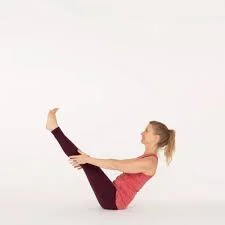
How to execute: Sit on the floor, extend your legs, and point your feet upwards while bending your knees. The angle between your legs should be roughly 45 degrees.
With your palms facing in, raise your arms parallel to your body.
Breathe deeply and contract your abdominals.
Perform 3–5 sets of one-minute holds.
3 sets in the day
muscle worked: biceps, triceps, hamstrings, core
Mountain skater
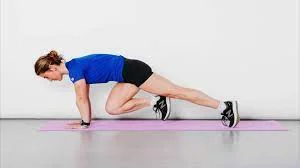
How to execute: Put yourself in the plank position.
Your left elbow should be close to your right knee.
Return it to the beginning position by jumping it.
Bring your left knee to your right elbow at the same time.
execute two to three sessions of 10 to 15 reps on each side.
muscle worked: shoulder, arm, chest
supine leg lift
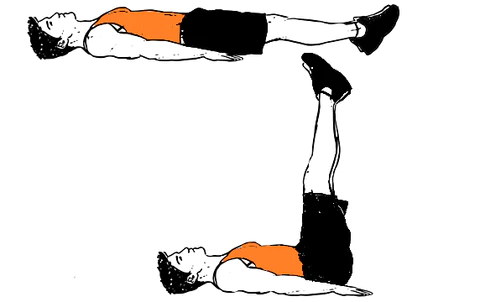
How to execute: the arms should be on the side of the body while you lean on the back.
Legs are raised straight up.
Slowly lower your right leg to the ground as you exhale.
Go back to the beginning place.
Do the left side next.
Perform two to three sets of 12 to 20 reps each.
then lift both legs at once for 1 to 2 sets of 12 to 15 repetitions.
muscle worked: lower abdominal, hip flexors
backward crunches

These lower ab movements, which are quite basic, are a fantastic mix to any ab workout. Performing this exercise
Laying on your back with your knees bent, elevate your legs into a “tabletop” posture to start. In other words, your thighs should be at a 90-degree angle with the ground, and your tibia bone should be at a 90-degree angle with your thighs.
With your palms down on the floor, extend your arms widely. This gives you a broad basis to aid with your balance.
Utilize your lower abs to push your hips off the ground while maintaining your upper back motionless. You should get the knees upward towards the chest.
After holding this posture for a brief moment, slowly go down your hips to the ground.
For multiple sets of 12–20 reps, or until you feel the burn, repeat.
Holding a small dumbbell between your feet will make this exercise more challenging. However, as usual, exercise caution to prevent injury when practicing ab workouts with added weight.
Perform two to three sets of 12 to 20 reps each.
muscle worked: rectus abdominis
farmer’s walk
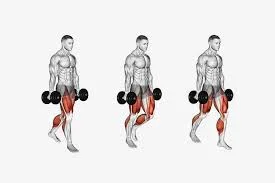
This workout strengthens your abdominal muscles and stabilizes your body and hips.
How to execute: Hold a heavy object or dumbbell by the handle with an overhand grip.
To promote healthy posture, activate your core.
Walk fifty meters slowly.
Do the left side next.
2 to 5 reps on each side
session: 2 to 3 times a day
muscle worked: quads, hamstrings, glutes, calves, erectors, upper back, traps, lats, abs, biceps, triceps, forearms, and hand muscles
cable crunches
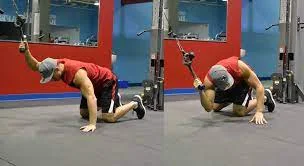
Maintain a strong core during this workout to protect your lower back from excessive stress.
How to execute: Kneel in front of an exercise machine with a wire rope attachment.
When the hands are next to the face, lower the cable rope attachment. This is where everything begins.
Maintain solid hips, tighten your waist, and place the elbows close to the center of the thighs.
Hold this posture for a minimum of two seconds.
Go back to the beginning place.
Execute two to three sets of 12 to 15 reps.
muscle worked: rectus abdominis, upper abs, lower abs
ab wheel rollout
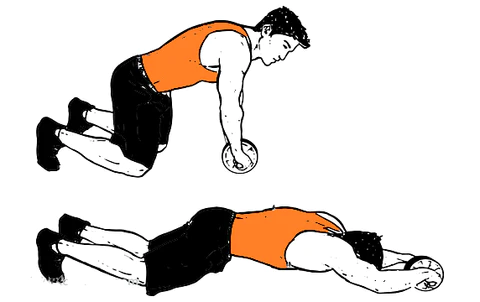
If you’re a newcomer, start with the rollout on a stability ball and progress to this exercise.
How to execute: Holding the abdominal wheel strongly, bend your knees to the floor.
As far as you possibly can, gently roll the wheel away from the knees.
Return to the beginning location with control.
Execute 2 to 3 sessions of 8 to 15 reps.
muscle worked: rectus abdominis, obliques, erector spinae (lower back),lattisimus dorsi, shoulder muscles
Flutter kick
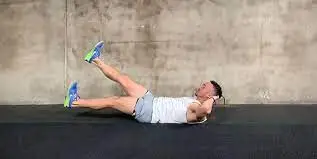
Maintain the knees straight and the ankles firmly together while you sleep on your back with the palms of your hands below the buttocks.
Maintain the arms straight and parallel to the ground, palms down.
While maintaining your abs tight, lift and lower your legs alternately as you elevate them a few inches off the floor.
10 to 15 reps
twice in day
muscle worked: mid and lower abs, glutes, hip flexors, quads, and adductors.
floor wiper
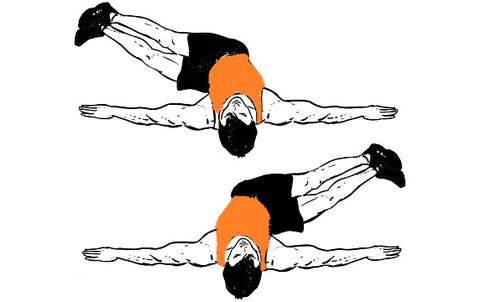
The palms of your hands should be solidly positioned on the floor while you rest on your back with your arms out straight in front of you.
To feel a stretch in the muscles of your obliques and lower back, lift your feet off the floor and curve your hips and legs to one side like a windshield wiper.
Swing the legs and hips to the opposite side after holding the stretch for 15 seconds.
5 reps
2 sessions
muscle worked: deep core, rectus abdominis, obliques
Superman T push-up
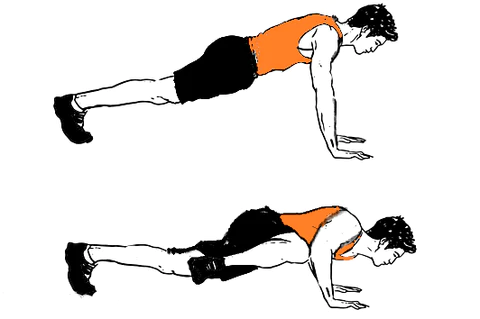
Put your hands in the pushup position and balance yourself by standing on your hands and toes.
now, Bring your right knee to the comparing elbow by squatting down
and come back to the beginning position after maintaining for 10 seconds.
Push yourself back to the starting posture by contracting the muscles in your abdomen.
Bring the left knee to your left elbow at this point. Make sure your knees are raised off the ground.
Pull your leg up while squeezing your oblique muscle.
reps 10 to 15
session 2 to 3 times a day
muscle worked: The primary muscles worked are the pectoralis major, anterior deltoids, triceps, abdominals, and obliques. The secondary muscles worked are the latissimus dorsi, erector spine (lower back), quadriceps, and glutes.
oblique v crunch
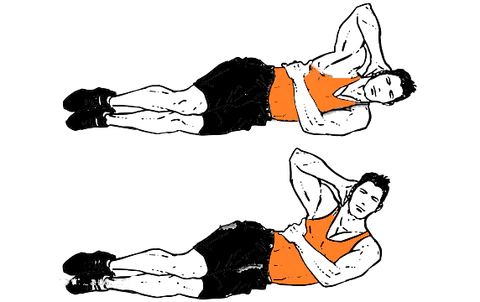
Knees bent slightly, lie on your right side.
Put the left side of your arm behind your head and your right hand behind your stomach.
Squeezing your obliques, raise your legs and body at the same time while attempting to connect your left knee with your left elbow.
As you gently return to the beginning position after maintaining the crunch, repeat on the other side.
15 to 20 reps
2 to 3 times a day
muscle worked: erector spinae, abdominal wall, Quadratus labarum, internal external obliques, core muscles
jumping rope
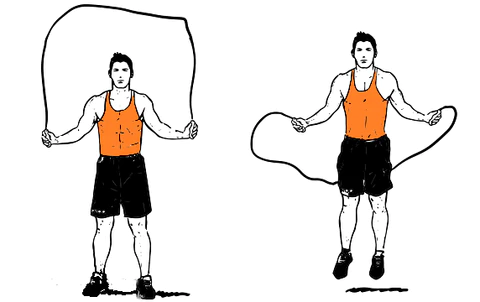
The middle of the jump rope should be behind you as you hold the ends in each hand out to the sides.
Swing the rope upward over your head while keeping your abs tight.
Jump over the rope with both feet as it swings downward.
Swing the rope once more behind you.
15 to 20 reps
three times a day
muscle worked: calf muscles, quads, hamstrings, glutes, abs, oblique muscles, forearms, biceps, triceps, shoulders, back muscles, and chest muscles.
side lying leg raise
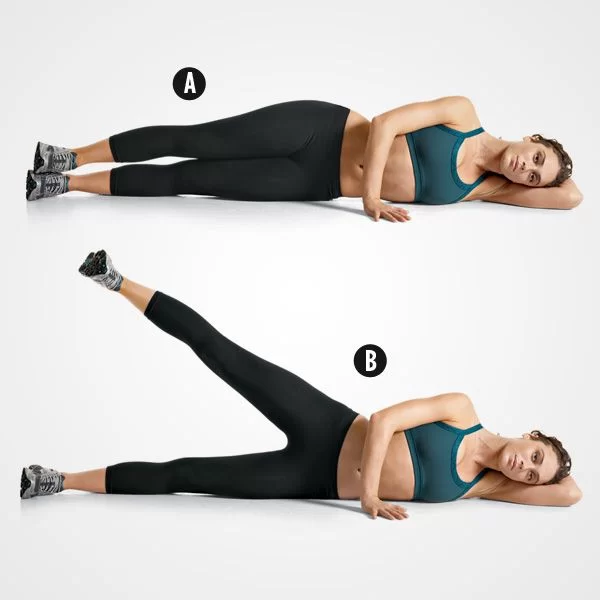
When sleeping on one side with the legs straight out in front of the ceiling, one leg should be positioned on top of the other. The body should be placed flat on the mat or supported by the forearm. The lower leg was bending downward. In this position, the side-lying leg lift begins.
Properly and softly raise the top leg toward the ceiling. Always lift from the hip and the gluteal region rather than the lower back.
Go back to the beginning point. So, one rep it is. Execute 10 to 15 times.
Once you’ve finished all the repetitions, switch to the other side.
3 times every day.
muscle worked: outer thigh muscles such as gluteus medius, gluteus minimus, hip abductor, tenor fascia latae, piriformis, sartorius, superior fibers of gluteus Maximus
gluteal bridge with a squeeze
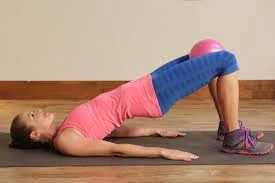
Move your fingertips so they are almost touching your heels while lying on your back with your legs bent. Pushing the belly button in toward the spine, gradually lift the lower back, mid back, and gluteal region off the floor. Make sure the feet are as wide as the hips. She or he should keep pressure on the gluteal bridge before releasing and lowering themself back down.
conduct a 10-rep session once or twice daily.
muscle included: gluteus Maximus
Calf lifts on one leg
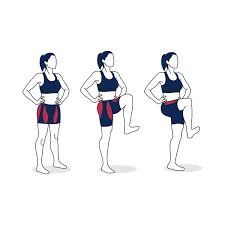
His or her feet should be hip-width apart as they stand.
Holding the toes pointed and the hands whenever they are most stable on the hips or behind the head raise the left knee to hip level. This is the single-leg calf raise’s starting position.
A strong one should be capable of lifting the heel of the right leg off the ground while the subject can maintain balance on the left foot for three to five seconds, then lower the soles of the feet to the floor to complete one repetition. The subject should be capable of doing ten repetitions on one side before changing to the other.
twice daily
muscle worked: calves, tibialis anterior
Wall squat
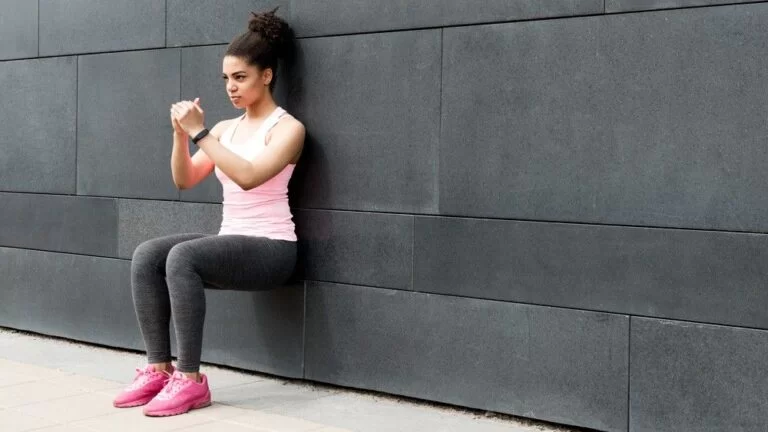
Keep your back straight and your feet hip-width apart when lying against a wall. As the person travels along the wall while bending at the knees, keep the arms at either side or on the hips. The thighs should be parallel to the floor when bending. To create a 90-degree angle at the knee joint at the top of the squat, the person may need to move their feet farther from the wall. Tighten the glutes and abdominals before rising upward on the wall to the spot where the person originally exerted pressure with the heels.
the muscle worked: gluteus, semitendinosus, semimembranosus, biceps femoris, vastus lateralis, vastus intermedialis, vastus medialis, rectus femoris
one-legged deadlift
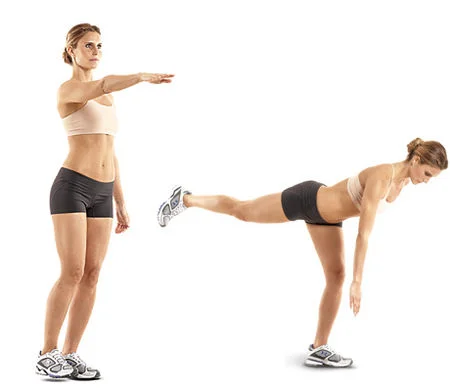
As you stand, spread your feet to hip-width apart. Put your weight on your left leg, and for balance, utilize your right toe as a footrest. As the person gradually begins to bend at the waist, keep the left knee flexible. For balance, place the hands on the thighs. Once the body seems to be in a straight line from head to toe, keep bending forward as the right leg progressively lifts upward and backward. check that the hips remain at the same level as the ground.
Reps: 5 to 10 times
slowing down the exercise starting the technique where the person left off.
twice in day
muscle worked: gluteus Maximus, gluteus medius, ankle muscles, core muscle
center, in and out calf lifts
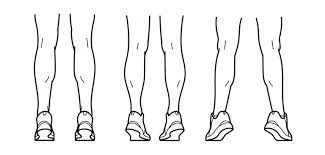
By shifting the foot position during calf raises, the user can more precisely target the two heads of the gastrocnemius muscle as well as various fibers of the deeper soleus muscle.
This variation is a wonderful substitute for executing straightforward calf raises with the toes forward because it allows the user to use all of the muscle fibers in the calf muscle group without the use of weight.
When performing the in and out variations of the calf, angle the foot for each change by roughly 30 degrees to the inside or outside.
When performing the in and out calf variations, slant the foot inward or outward by roughly 30 degrees for each of the two modifications.
This leg exercise requires no specialized tools, and beginners should use both legs simultaneously. The next stage involves performing single-leg calf raises in each of the three positions.
The following procedures must be followed in order to complete this leg exercise using only your body weight:
- The heels of the feet should hang off the edge of the platform or floor when the user places them. If the person has the strength, they should be able to stand on one leg and support themselves with the other.
- By pressing into the heel of the foot and raising up onto the tips of the toes, the person should conduct calf raises.
- Hold the upward ankle position for two to three seconds while at rest.
- Once the heel has positioned itself greatly below the level of the staircase and the calf muscles have been sufficiently stretched, gradually shorten the trip. A person should exercise through a larger range of motion, tolerate stress for a longer period of time, and utilize more muscle fiber, calf mass, and strength to achieve beneficial gains.
- At least 20 to 25 repetitions should be performed with your toes pointing forward.
- Following that, repeat the exercise while putting your toes inward. such that the person is standing pigeon-toed.
- Conduct the same exercise after that variation while standing with your feet together and your toes pointing outward.
the muscle worked: gastrocnemius, soleus
a straight-leg kickback

Put your weight on your right leg as you stand straight. While contracting the gluteus, raise the left leg straight backward at a 45-degree angle with the standing leg. Ten repetitions on this side, lowering the leg gradually. After completing one side rep, the person can switch sides by moving the weight to the left leg and elevating the right leg upwards and backward.
every two to three hours.
muscle worked : gluteus Maximus, gluteus medius, gluteus minimus
Gluteal Bridge
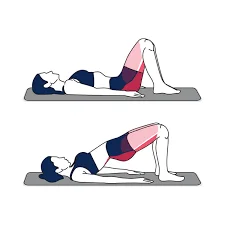
Legs bent, feet hip-width separated, and face toward the ceiling while lying down.
such that the core is strengthened when the lower back presses on the floor. this is the initial phase of the gluteal bridge.
Pressing the glutes at the top will lift the hips while keeping the tight position. Hold for a brief moment, then lower your hips to the floor to return to the starting position. It’s one rep, then. make 10 to 15 repetitions.
two to three times per day.
muscle worked: gluteus Maximus
an upright hamstring curl
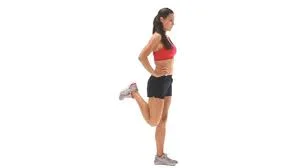
Standing with your feet as far apart as your hips can help you get ready to work your legs’ backs. Join the right leg’s back, flex the knee, and move the heel of the right leg toward the gluteus. Lower the gluteus muscle. Alternate legs for the following ten reps. two to three times every day
the muscle worked: hamstrings such as semitendinosus, semimembranosus, biceps femoris, and gluteus
burpee

Begin by bending your knees, keeping your back straight, and placing the feet shoulder-width apart in a squat stance.
Put your hands quickly inside your feet on the floor in front of the ceiling.
Kick your feet back to assume the pushup posture while supporting your weight on your hands.
Perform one pushup while maintaining a straight body from head to heels.
Jump the feet back to their initial position to perform a frog kick.
Stand up, extend your arms above your head, and jump high.
After you come back to a normal position with your knees bent, squat down and conduct another repetition.
2 times a day
muscle worked: leg, core, chest, shoulder, arm, upper back
Russian twists
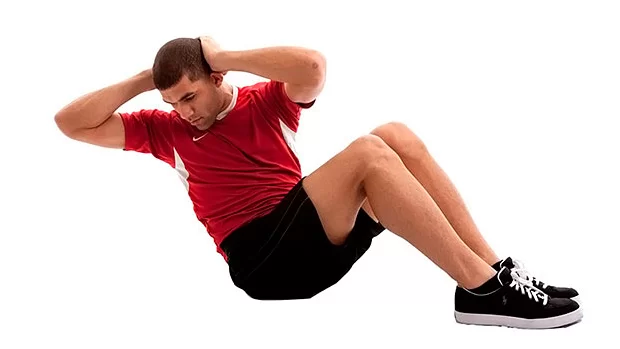
Hold a weight or use a decline bench to increase the intensity.
How to execute: If you can, raise the heels a few inches off the ground while sitting on the floor with the knees bent.
Make a 45-degree backward body incline.
Straighten the arms in front of the face.
Twist left, then back to the center, and finally to the right.
Execute two to three sessions of 10 to 15 reps each.
2 to 3 times a day
muscle worked: obliques, transverse abdominis, rectus abdominis, hip flexors, erector spine, scapular muscle,latissimus dorsi
an ab v hold
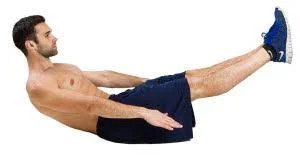
In order to maintain and keep the ab V hold, you must balance in a position that calls on lower abdominal strength. The ab V hold will burn more intensely the longer you perform it. To complete this activity:
Lean flat on the back to start.
Raise your body and your legs roughly 45 degrees above the ground while keeping both hands by your sides. Your hips should be touching the floor while your body forms a “V”. Hold your legs straight and have a powerful, centered stance.
Utilize your arms for balance while holding your abs. Some people discover that balancing is much simpler if they stretch their arms perpendicular to the floor and aim them toward their legs. If you do this, don’t, under any situation, support the legs with your arms.
Maintain abs v hold posture. Hold this position for 30 sec to 2 minutes, or until you start to feel the sensation of burning. Iterate as necessary.
This exercise can also be performed while seated on a chair. Put your legs together after moving forward to the chair’s edge. Raise your legs upward and lean back while holding on to the chair. Maintaining your legs straight, raise your feet so they are 6 to 12 inches (15 to 30 cm) above the floor.
hold ab v hold for 1 minute
conduct 10 reps
2 times a day
muscle worked: rectus abdominis, transverse abdominis, obliques, and hip flexors.
bastards

Squat down until your thighs are equal to the floor, starting with your feet spread shoulder-width apart.
Put the hands on the ground at the base of the squat, then extend the legs behind you to conduct a press-up.
At the bottom of the squat position, tuck the legs in until your arms are straight. Repeat driving up via your heels until you are 6 inches off the ground.
5 reps
2 time day
muscle worked: Arms, Abs, Chest, Shoulders, legs.
Hit a medicine ball
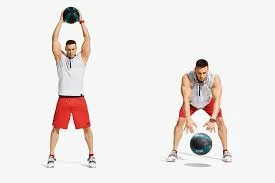
Holding a medicine ball above your head with your arms outstretched, stand with your knees slightly bent.
Toss the ball against the floor approximately a foot in front of you by bending forward at the waist and using your core muscles.
To avoid falling forward, let your arms follow through. Catch the ball as it rises again, then do it again.
30 reps
three times a day
muscle worked: upper back, core muscles, triceps, glutes, quads, and hamstrings
Touching Toes Alternately
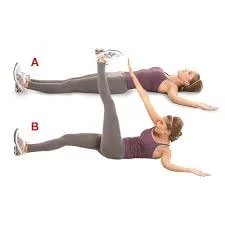
The double crunch is extended into the alternating toe touch, which has even more advantages. It targets the whole abdominal wall in just one continuous motion, including the lower abs, transverse abdominals, external obliques, and internal obliques. Because it teaches the abs to collaborate across various planes of movement, it’s a fantastic core exercise.
Execution: Lie on the back with your arms straight overhead and your legs straight up in the air.
Crunch up and to one side while contracting your abs, stretching across your body to contact the other foot. Make sure to maintain a downward, shoulder-away posture
Without fully bringing your arms back down to the floor, revert to the starting posture (only approach for more difficulty).
With individual reps, change sides.
12 reps for each leg.
Sets: 3 in day
Tips for getting v cut
- Eat healthfully. This is more important than any lift or crunch you will do, but it doesn’t get enough attention. You must eat sensibly if you want to see benefits.
- Lessen the intake of sugary drinks like soda. These two are capable of destroying any diet right away. You are permitted to “reward” oneself, but rewards must be earned. Set a goal of one prize every week or three rewards every two weeks. This does not mean simply one meal or one drink for the duration of the day. However, avoid eating fast food with this meal because it will take several days to get clear of fast food.
- You should start looking for more challenging routines after your fundamental fitness level and V-shape start to show.
- Perform all-around ab exercises since you want to tone up your body. Work on your side abs and upper abs as well because they are frequently used in conjunction with lower ab exercises.
- As more fat is consumed overall, more protein can be used to build muscle. Saturated, polyunsaturated, and monounsaturated fats are the best sources of fat to consume. Trans fats should be avoided because they are unhealthy for the body.
- eat sugar-free items if you have a sweet tooth but don’t want to eat sugar. Diet soda is sugar-free. Moreover, stevia power, which tastes 200 times sweeter than sugar, is a good sweetener as sugar.
- an individual should not require a lot of it
Diet
Diet plays a big part in getting six-pack abs. You must have an attractive build for all of your hard work in the gym to be unmistakable.
The majority of heavyweight powerlifters, have incredibly powerful cores yet can appear overweight due to their relatively high levels of body fat. Even the strongest, most well-developed ab muscles are unnoticeable if they hide under fat. If you have belly fat in your midsection, reducing your body fat percentage is a must if you want a V cut, and one of the greatest methods to do this is with a weight-loss plan.
Numerous weight-loss diets are available in print and online. some are inexperienced and unusable, while still others are unhealthy. Some are sound and sensible. Most effective weight-loss plans will suggest a diet built on a combination of the following suggestions
Eat fewer fatty, sugary foods. Desserts should not be a part of your diet unless they are occasional treats.
Consume filling and lean protein. Leaner cuts of red meat, fish, and chicken breasts are also excellent choices. Nuts, seeds, and low-fat dairy products are also healthy options.
eat plenty of fresh produce. This low-calorie, nutrient-dense foods are crucial for keeping your body healthy.
Eat carbohydrates in moderation. When choosing bread, choose whole-wheat kinds that are more filling and healthier, as well as ones that include beneficial starches.
Your diet should not be centered on deprivation or cleansing in order to lose weight. Everybody must eat every day to some extent. Your body will become fatigued, and irritable, and your senses will become dull if you don’t give it the food that it requires. You can even lose muscle because you won’t be able to complete the necessary muscle-building workouts to develop your V-cut muscles. In really dire circumstances, you can even put your health in grave danger.
The body mass index (BMI) is not always a reliable hand of health. People who are exceptionally muscular often have very low body fat percentages and a relatively high BMI.
Keep in mind that any weight loss should be low and incremental.
Get plenty of water: Water consumption has long been believed to help or even speed up weight loss. However, its crucial significance to almost all body activities is more significant. You’ll be sweating considerably more than normal now that you’ve (hopefully) begun cardiac exercise, so you’ll need to refill it to stay alert, concentrating, and healthy. At least eight glasses of water per day are advised by several diets.
Cardio
Aerobic exercise will raise your heart rate. In order to keep in shape and aid in belly fat reduction, add plenty of cardio to your workout routine.
Cardio exercises include walking, swimming, and cycling. Hiking, running, or dancing are additional ways to start moving. Spend no more time just less than 30 minutes each day.
Cardio exercise is a fantastic technique to burn calories and fat (when combined with a healthy diet). Making cardio exercise a part of your routine can lower your heart rate, boost blood flow, improve your daily energy level, and just make you feel better. Cardio has a range of additional health benefits. Numerous aerobic workouts don’t need a lot of expensive equipment or special training.
One of the most basic yet intensive and efficient kinds of cardiac exercise is running. To increase your metabolism, alternate high-intensity running with jogging and walking. Rest for at least a day in between challenging runs, but aim to get in a quick workout on days off, like a 30-minute walk.
Think about doing resistance training
The best exercise for weight loss is aerobic, not resistance (strength-training) activity. While aerobics alone can burn fat, building muscle via resistance training must boost your whole metabolism and consequently increase the amount of calories you burn on a daily basis. As a result, some exercise consumers believe in a combination of resistance training and cardio exercise. It’s unlikely that resistance exercise can help you gain much muscle if you’re currently trying to lose weight. however, you will have better form and, per some sources, significantly lessen the amount of muscle you burn while losing weight, clearing fat nearly solely.
Increase your general level of activity
The single most efficient technique to lose weight requires no extreme diets or intense physical activity, which can be challenging to fit into your routine if you’re always busy. Simply look for ways to enhance your daily physical exercise. Almost anything you can do to keep moving throughout the day will increase your metabolism, which, when all other factors are equal, will lead to weight loss. Attempt to find ways to be more active while performing these regular tasks
- on everyday transportation: Try biking, running, or walking to work instead of taking a car. You will need to walk from the stop when using public transit, so look into your options.
- Work: Look for opportunities to get up from your desk if your job forces you to sit in it all day. If you can, just set the computer on top of one or two boxes to make a “poor man’s” standing desk. Alternatively, think about investing in a standing or walking desk. A simple way to avoid back pain is to change up your desk habit.
- relaxation at home. Do some simple workouts such as jumping jacks or lunges on an elliptical trainer or in front of the TV rather than sitting on the sofa at home.
Keep a balanced daily schedule
Even though the majority of your V cut will depend on your body fat percentage, genetics, and lower ab power, it is a very good idea to engage in a thorough core exercise. As a result, not only will your stomach appear rounded out rather than unbalanced or uneven, but it will also increase your general strength, comfort, and health. Back pain treatment and other common ills are typically linked to core strength. Therefore, be sure to plan on working out the rest of your core as well before you approach your V cut with full dedication. Here are some workouts an individual might want to attempt
lateral crunches: These simple exercises alter the standard crunch to work your obliques and core abs.
Bridges: The lower back can be strengthened with these workouts without being put under stress. a superb option for those who suffer from lower back pain.
Lunges: Remember that the legs and hips are a component of your core. Lunges are a body-weight exercise that can help with balance in addition to strengthening your thighs, glutes, hips, and back.
Yoga postures: Yoga is a very effective and calming method to strengthen your core. Additional advantages include improved flexibility and balance, among many more.
Benefits for exercises of a v-cut
- Increasing core strength: Ab exercises target the muscles that make up the core of your body, including the rectus abdominis, obliques, and transverse abdominis. Your posture, balance, and stability should all be improved as well as the chance of injury with a strong core.
- Strengthening your abdominal muscles can also help you perform better in sports activity by boosting your flexibility and power as well as your capacity to create force and transmit energy from your lower to upper body.
- lowering back pain: Poor posture and back pain can be caused by weak core muscles. Enhancing your posture, relieving pressure on the lower back, and lowering the chance of developing chronic back pain can all be achieved by strengthening the abs
- Improving overall fitness: Including ab exercises in your training can help you reach overall fitness objectives like weight loss, muscle toning, and endurance improvement.
- Gaining abdominal strength will improve your physical appearance, which can boost your sense of self-worth and self-worth.
Overall, ab exercises have a lot of advantages that will improve your physical and mental health, making them an essential part of any training program.
Warnings
Avoid dehydrating yourself. Make healthy eating a permanent part of your life rather than a passing trend. Consume just enough energy-sustaining calories to get through, but no more. For more energy, eat more in the morning but not much at night.
Do not perform advanced weight routines by yourself; spotters should be present because some routines may result in damage.
The conclusion
Although having V-cut abs is attractive, they only make up a portion of the picture. Additionally, by remaining active, eating right, and making smart decisions, you’ll want to train your entire body.
While not everyone can get V-cut abs, the majority of people can increase their level of fitness and feel better all over. Decide what you want to achieve, and then make a commitment to an exercise, food, and lifestyle plan that will help you get there.
Instead of evaluating your achievements or outcomes against those of others, let your own features serve as the measure of the result. The process includes learning to accept and appreciate all parts of the body.
FAQS
How does one obtain a V cut?
Focus on your lower abs and obliques to acquire V-cut abs. As we guide you via some workouts that can help you define your abs, keep reading. Additionally, it’s critical to maintain a good diet and get plenty of exercise in order to reduce your body fat percentage and show off your abs.
How much time is needed to achieve V-cut abs?
Desiring to clear between one and two percent of body fat each month is a wise (and secure) generalization. So it should take anywhere from 3 months to 2 years to make your abs. time should change, in fact.
Do all men possess V lines?
All people have an inguinal ligament, although not all people have V-shaped abs. On extremely thin individuals with little belly fat and a well-developed rectus abdominis muscle, the V-line will be visible. To put it another way, V-line abs need effort.
Are girls able to have a V shape?
This will be the hipbones for some ladies. For certain people, the area across the leg gap may be the broadest. Your body is considered to be in a V shape if the line from the hips to shoulders curves inward and your waist is contained within the drawn line.
What is the name of the V on a guy?
The deep v-shaped cut on bodybuilders’ abs is called the transversus abdominis. The transversus abdominis, also referred to as “sex lines,” is a muscle that runs around your body and supports your spine. The muscle’s visible margins show that you have a very strong core and little body fat.
How can I tell if my body is V-shaped?
The width of your shoulders must be significantly broader than your hips in order to form a V shape. You might or might not have a waist, but many V shapes have a shorter waist, if so, apply the H shape’s suggestions via the area of the waist; specifically, avoid tucking in any details or adding pockets, belts, gathers, or pleats
How can you get abs with deep cuts?
Crunches performed with the knees raised can truly target the upper abs. In order to achieve proper muscular activation of the lower abs, you may perform reverse crunches (curl up from the pelvis). With the goal of proper oblique activation, twisting crunch variants can also be added.
Are V shapes appealing?
Girls obsess over the formed, V-shaped lines that outline a man’s core and hint at something deeper. The man-V is demanding to the psychology major since “it leads to something that is banned.
What activity suits a V-shaped face the best?
Put pressure on your cheekbones with your forefinger and middle finger while forming an exaggerated O-shape with your mouth, similar to a very large yawn. The muscles under your cheekbones should feel a little tight. Hold for approximately five seconds, then ten times.
How can I achieve a V-shape naturally without surgery?
Creams for slimming and lifting the face. A beautifully contoured face is stunning.
Massage for facial slimming. When it comes to face-slimming massages, you have a variety of options to select from, including the “Gua Sha” technique, the lymphatic draining approach, and many others. Yoga and diet.
References
How To Get V-cut Abs? 10 Best Exercises To Define Lower Abs. (n.d.). AS-IT-IS Nutrition. https://asitisnutrition.com/blogs/health/how-to-get-v-cut-abs-10-best-exercise-to-define-lower-abs
Cronkleton, E. (2019, July 24). 10 Exercises That Help You Get V-Cut Abs. Healthline. https://www.healthline.com/health/exercise-fitness/v-cut#takeaway
Morris, M. (2023, August 17). How to Get a V Cut: 12 Steps (with Pictures) – wikiHow. wikiHow. https://www.wikihow.com/Get-a-V-Cut
BOXROX. (2023, September 20). https://www.boxrox.com/fat-shredding-v-cut-abs-workout-for-a-great-six-pack/
Evans, M. (2019, January 3). 5 Moves to Get the Abdominal V-shape You’ve Always Wanted. Men’s Health. https://www.menshealth.com/uk/fitness/a757936/5-moves-to-get-the-abdominal-v-shape-youve-always-wanted/
VanDoren, C., & Turbett, J. (2023, April 4). The 8 best lower ab exercises to help you achieve V-cut abs. The Manual. https://www.themanual.com/fitness/best-lower-ab-workouts/
Dale, P. (2023, January 14). Most Effective V-Line Ab Workout & Diet Program to Build the ‘Sex Lines’ Workout Temple. https://workout-temple.com/en/exercise-guides/v-line-ab-workout/

